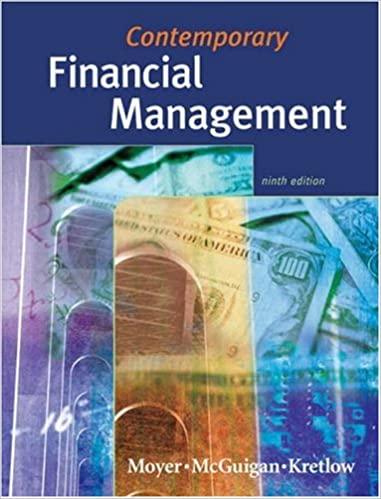
Benchmark Metrics Inc. (BMI), an all-equity financed firm, reported EPS of $4.26 in 2008. Despite the economic downturn, BMI is confident regarding its current investment opportunities. But due to the financial crisis, BMI does not wish to fund these investments externally. The Board has therefore decided to suspend its stock repurchase plan and cut its dividend to $0.77 per share (vs. almost $2 per share in 2007), and retain these funds instead. The firm has just paid the 2008 dividend, and BMI plans to keep its dividend at $0.77 per share in 2009 as well. In subsequent years, it expects its growth opportunities to slow, and it will still be able to fund its growth internally with a target 45% dividend payout ratio, and reinitiating its stock repurchase plan for a total payout rate of 64%. (All dividends and repurchases occur at the end of each year.) Suppose BMI's existing operations will continue to generate the current level of earnings per share in the future. Assume further that the return on new investment is 15%, and that reinvestments will account for all future earnings growth (if any). Finally, assume BMI's equity cost of capital is 10%. a. Estimate BMI'S EPS in 2009 and 2010 (before any share repurchases). b. What is the value of a share of BMI at the start of 2009 (end of 2008)? Hint: Make sure to round all intermediate calculations to at least four decimal places. a. Estimate BMI's EPS in 2009 and 2010 (before any share repurchases). BMI'S EPS in 2009 is $. (Round to the nearest cent.) BMI's EPS in 2010 is $ (Round to the nearest cent.) b. What is the value of a share of BMI at the start of 2009 (end of 2008)? The value of a share of BMI at the start of 2009 is (Round to the nearest cent.) Benchmark Metrics Inc. (BMI), an all-equity financed firm, reported EPS of $4.26 in 2008. Despite the economic downturn, BMI is confident regarding its current investment opportunities. But due to the financial crisis, BMI does not wish to fund these investments externally. The Board has therefore decided to suspend its stock repurchase plan and cut its dividend to $0.77 per share (vs. almost $2 per share in 2007), and retain these funds instead. The firm has just paid the 2008 dividend, and BMI plans to keep its dividend at $0.77 per share in 2009 as well. In subsequent years, it expects its growth opportunities to slow, and it will still be able to fund its growth internally with a target 45% dividend payout ratio, and reinitiating its stock repurchase plan for a total payout rate of 64%. (All dividends and repurchases occur at the end of each year.) Suppose BMI's existing operations will continue to generate the current level of earnings per share in the future. Assume further that the return on new investment is 15%, and that reinvestments will account for all future earnings growth (if any). Finally, assume BMI's equity cost of capital is 10%. a. Estimate BMI'S EPS in 2009 and 2010 (before any share repurchases). b. What is the value of a share of BMI at the start of 2009 (end of 2008)? Hint: Make sure to round all intermediate calculations to at least four decimal places. a. Estimate BMI's EPS in 2009 and 2010 (before any share repurchases). BMI'S EPS in 2009 is $. (Round to the nearest cent.) BMI's EPS in 2010 is $ (Round to the nearest cent.) b. What is the value of a share of BMI at the start of 2009 (end of 2008)? The value of a share of BMI at the start of 2009 is (Round to the nearest cent.)







